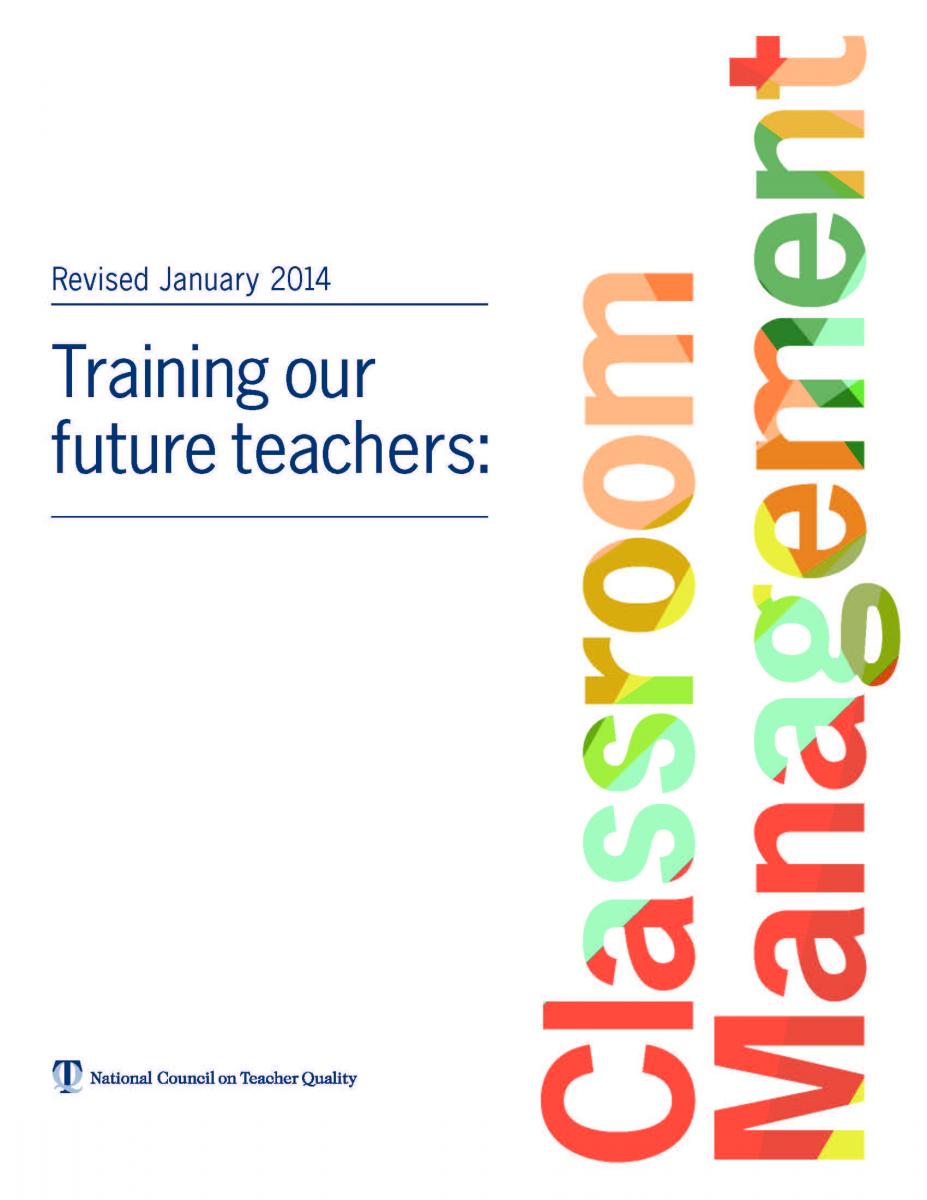Ten Tips for Effective Classroom Management
Communicator February 2014, Volume 37, Issue 6 Keeping a classroom under control is often a teacher’s biggest challenge—but a new report suggests that teacher preparation programs aren’t doing enough to help aspiring teachers learn classroom management.
Communicator
February 2014, Volume 37, Issue 6
 Keeping a classroom under control is often a teacher’s biggest challenge—but a new report suggests that teacher preparation programs aren’t doing enough to help aspiring teachers learn classroom management.
Keeping a classroom under control is often a teacher’s biggest challenge—but a new report suggests that teacher preparation programs aren’t doing enough to help aspiring teachers learn classroom management.
The National Council on Teacher Quality’s (NCTQ) December 2013 report, “Training our future teachers: Classroom Management” argues that many of the nation’s teacher preparation programs provide inadequate training in proper classroom management techniques. The report cites research that states over 40 percent of new teachers felt either “not at all prepared,” or “only somewhat prepared” to handle classroom management and discipline.
Part of the problem stems from the assumption that instructional virtuosity will erase the need for defined classroom management strategies. However, this way of thinking ignores how classroom management strategies can enhance teaching at every level.
NCTQ makes five research-based recommendations on what strategies should be taught in teacher preparation programs. These strategies should be considered equally by principals who want to encourage better classroom management among their own teachers:
- Rules. Teachers need to be explicit about what their expectations are for student behavior in the classroom. The rules should be taught and applied in a fair and consistent manner.
- Routines. Routines and procedures let students know how to act during class activities, such as group work or handing in homework. Momentum for instruction is also key in managing class time and materials, especially during transition between activities.
- Praise. Positive behavior should be reinforced with praise or other rewards. Praise itself should be specific and sincere, and should focus on congratulating behaviors, rather than the individual.
- Misbehavior. Noncompliance with class rules and expectations should have consequences. It’s essential, however, that these consequences not only have varying levels of severity, but that they are applied consistently.
- Engagement. High-quality instruction should engage students, and the more engaged the student, the less likely they are to act out. Opportunities for student participation will ensure that students spend more time learning and less time misbehaving.
In addition to these “Big Five” recommendations, the report also identifies a number of strategies that principals and teachers should consider.
- Manage the physical environment. Teachers should be able to see every student, manage traffic flow during transitions, and strategically group desks.
- Motivate students. Different from engagement, motivation focuses on whether or not students want to learn or follow rules.
- Use the least intrusive means. Subtle techniques for misbehavior include proximity, rule reminders, giving a “teacher look,” or redirecting student’s attention back to the lesson with a substantive question.
- Parent and community involvement. Making phone calls home, meeting with parents, or other forms of stakeholder engagement can help with a student’s behavior
- Social/emotional/cultural sensitivity. Teachers who understand students’ social, emotional, and cultural backgrounds are better classroom managers.
Combined with the “Big Five,” these classroom management strategies can help teachers stay in control and spend more time teaching. By encouraging these skills in new teachers, principals can help fill the gap between preparation and practice.
—Ned Colbert, NAESP communications assistant
—
Copyright © 2014. National Association of Elementary School Principals. No part of the articles in NAESP magazines, newsletters, or website may be reproduced in any medium without the permission of the National Association of Elementary School Principals. For more information, view NAESP’s reprint policy

